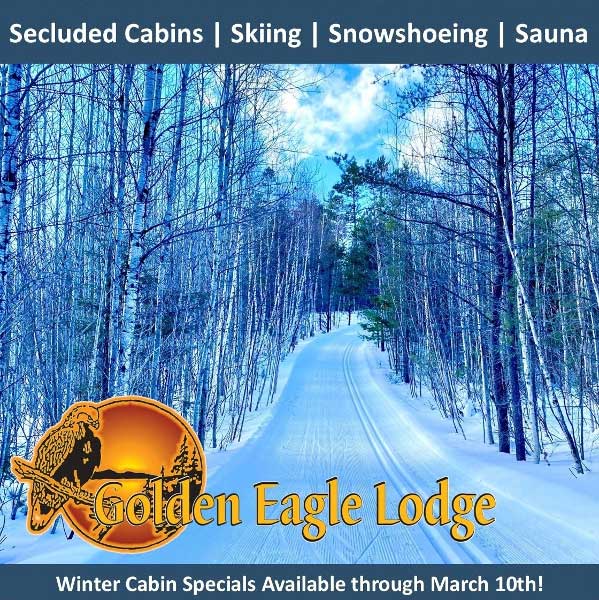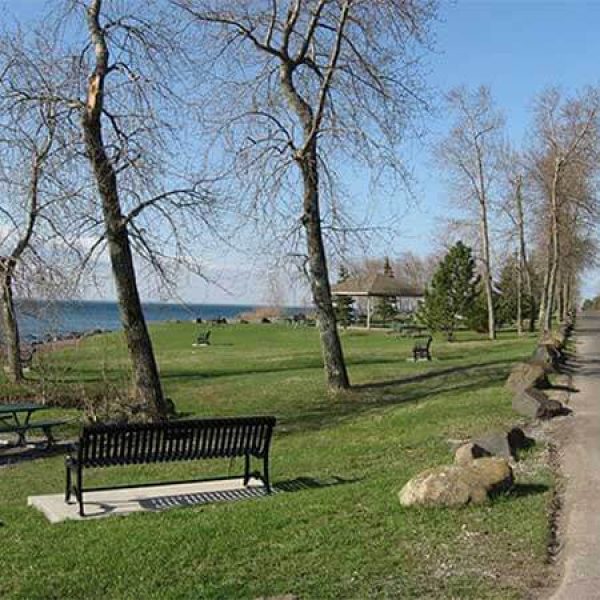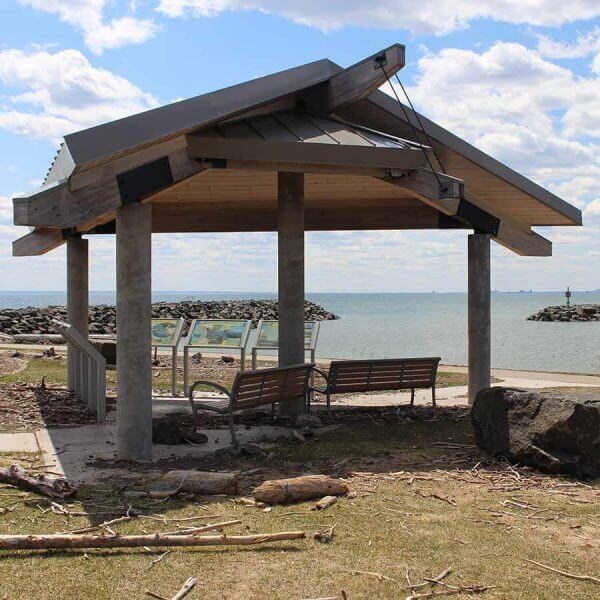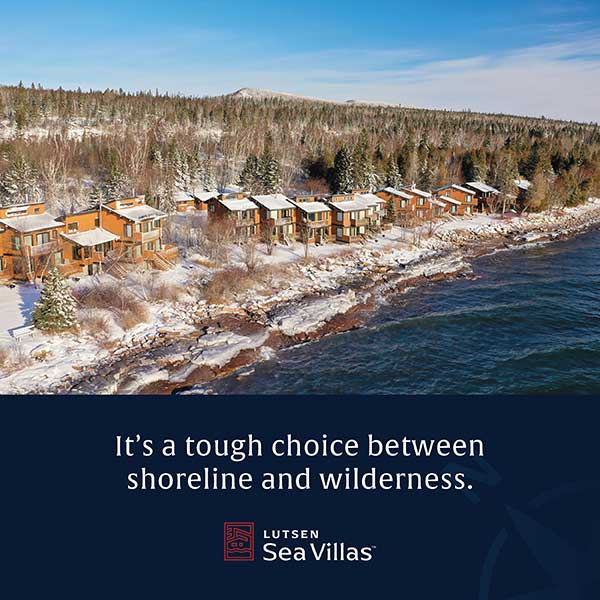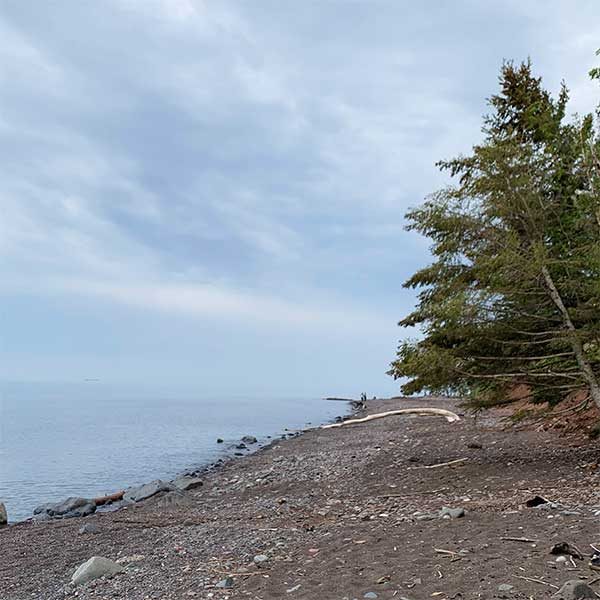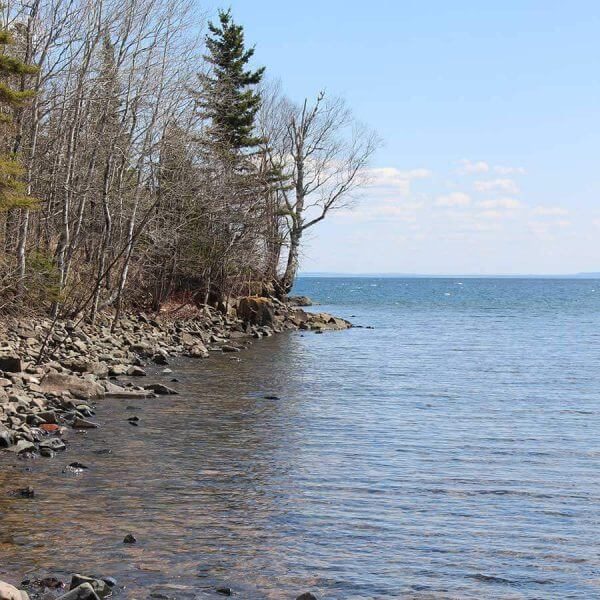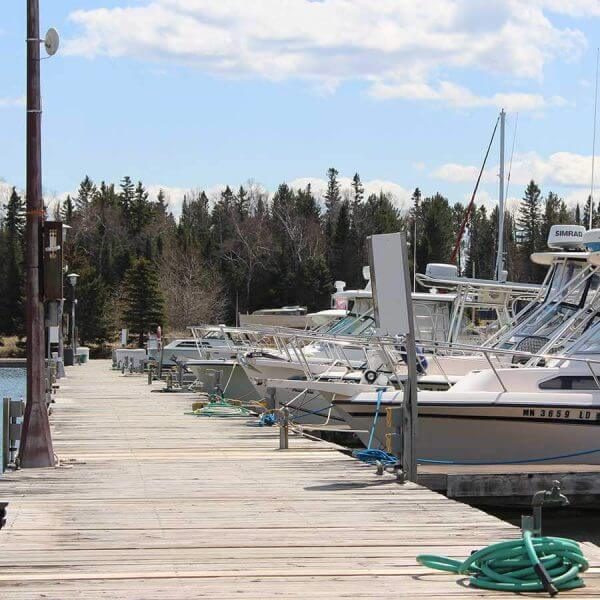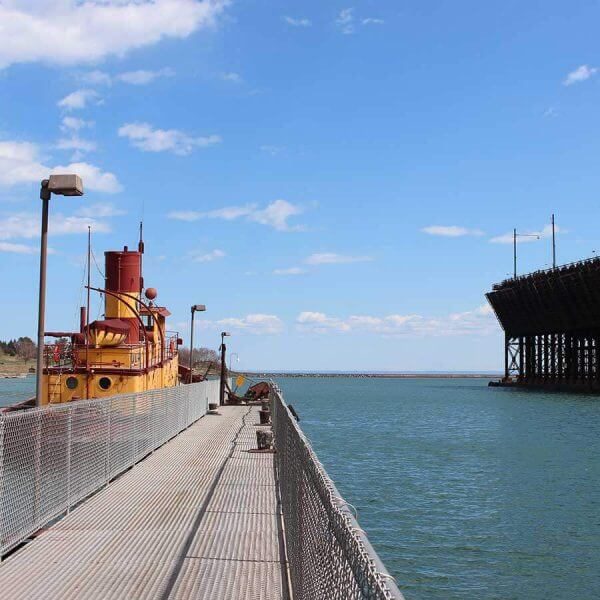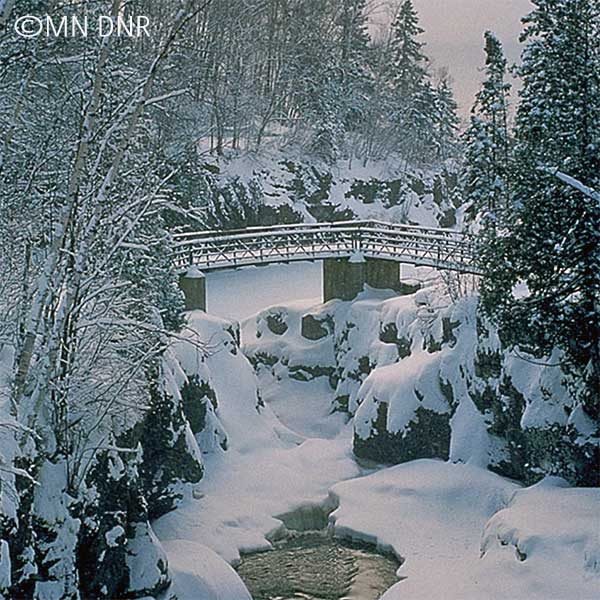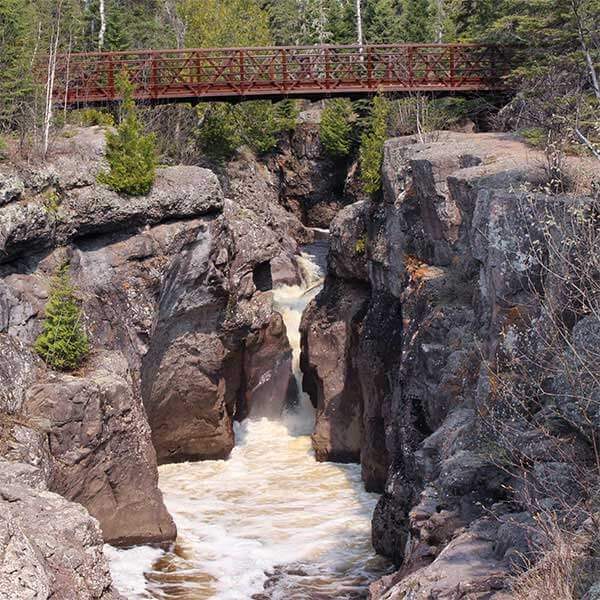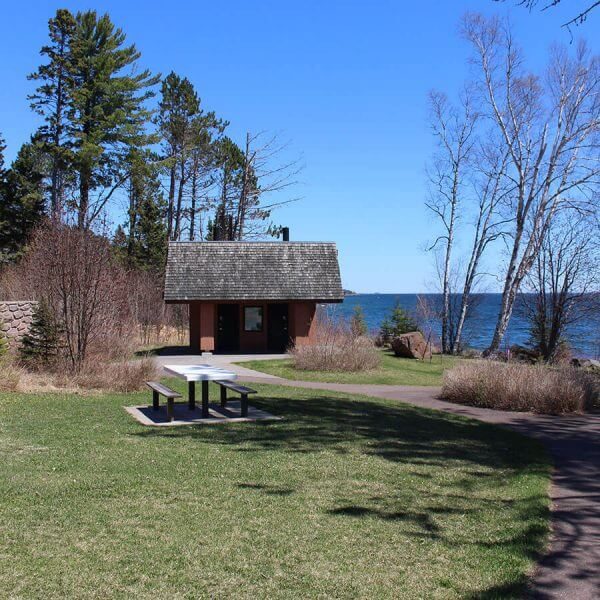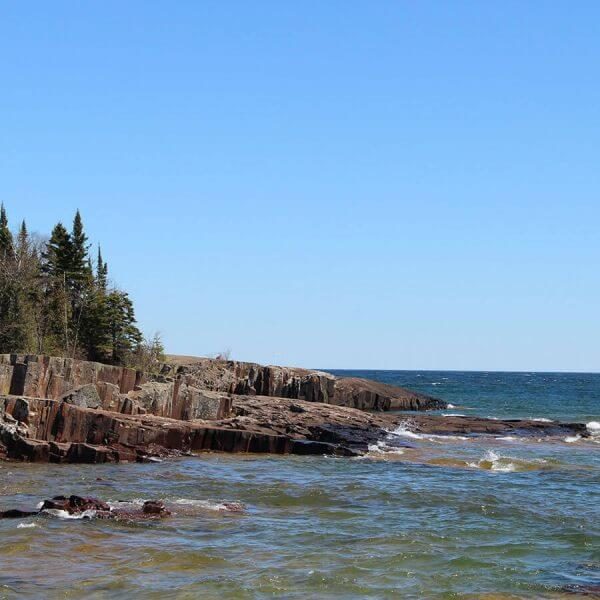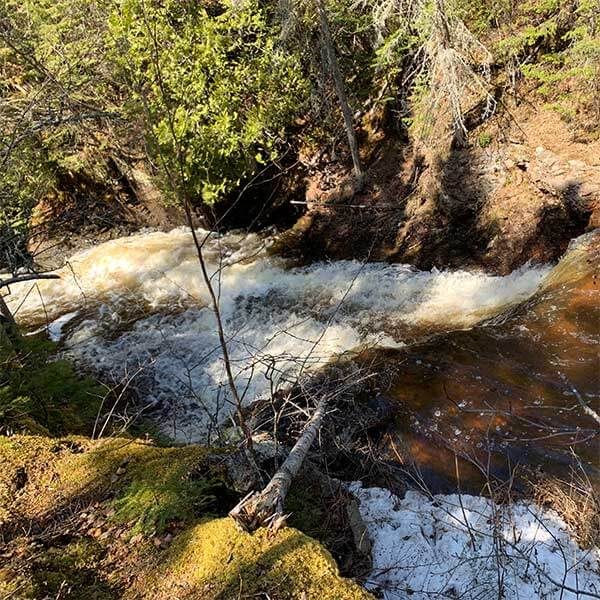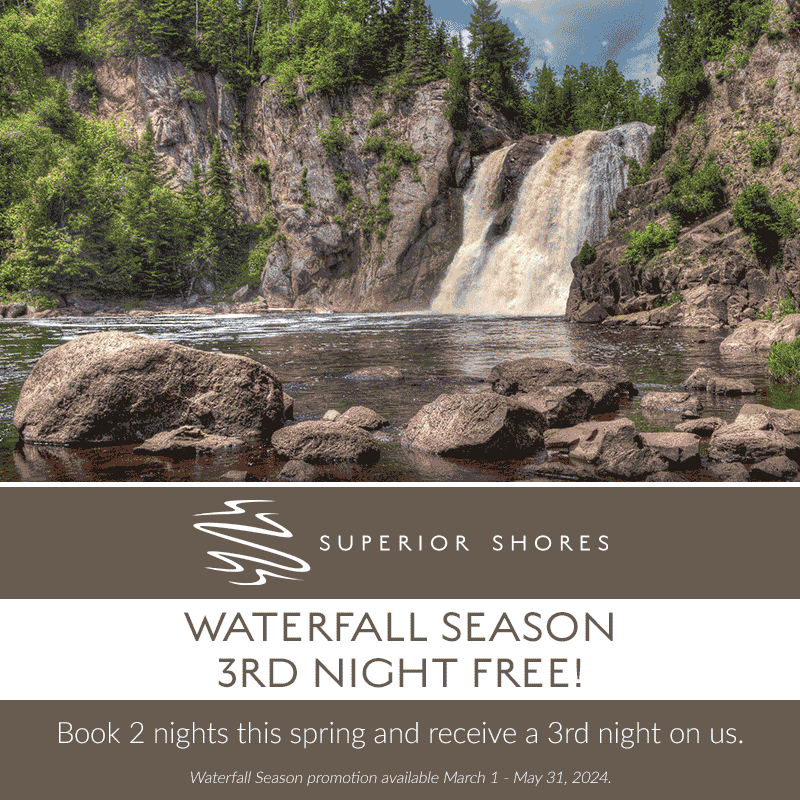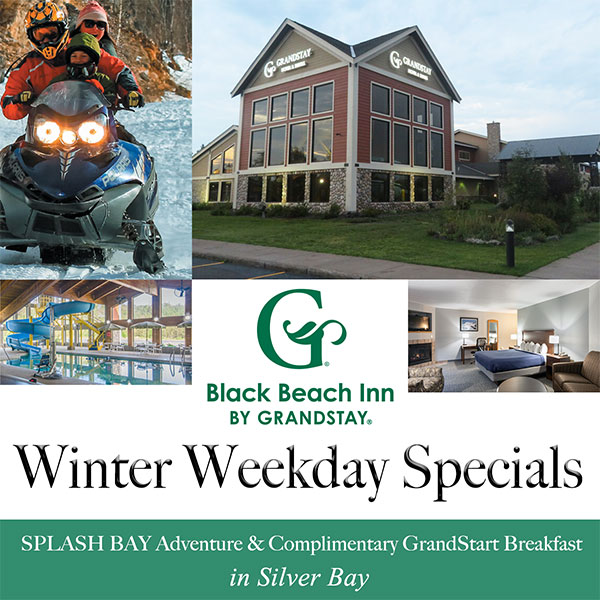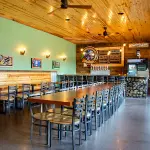
lake superior
As the largest freshwater lake in the world, Lake Superior feels like an inland sea. Thousand-foot lakers [ships that sail the Great Lakes] and salties [ships that cross oceans/salt water] cross the lake to the ports of Duluth and Two Harbors. Its’ vastness surprises visitors. Shaped like the head of a west-facing wolf, you can only see the opposite shore at the tip of the nose in Duluth / as you head up the north shore and at the eastern edge.
how deep is lake superior
Lake Superior’s average depth is 483 feet and reaches a depth of 1332 feet, about a quarter-mile deep. The deepest point is 40 miles north of Munising, Michigan on the south shore of the lake.
how big is lake superior?
Big enough that experts estimate about 350 shipwrecks have occurred in Lake Superior, of which only half have been located. It is just a bit smaller than the country of Austria at 31,700 square miles. It is 350 miles wide [east-west] and 160 miles tall [north-south] and has 1,826 miles of shoreline.
how much water is in lake superior
Lake Superior hold’s 10% of the world’s fresh water, three quadrillion gallons. That’s 12 zeros: 3,000,000,000,000
how cold is lake superior
The average water temp is around 40º F and the highest surface temps are about 65º F in August, with the coldest temps in March when they hit the freezing point. The lake forms ice covering about 70% of its surface in any given year and freezes over once every 20 years, the last time being 2014. Park Point, the sand peninsula reached by crossing the iconic Aerial Lift Bridge, boasts shallow sandy shorelines where the summer sun warms the water. As you head up the north shore or away from shore the water gets colder.
Lake Superior, referred to locally as ‘the big lake,’ acts as a coolant in the summer months, bring temps down by 15-20º F compared to a few miles inland. Hence the colloquialism ‘colder by the lake.’ This flips in the winter when that warm 30-35º water acts like a heating pad keeping conditions along the shore more temperate, well, relatively.
Lake Superior offers up plumes of sea smoke when the cold winter air hits the ‘warm’ water,’ refracts the sun into millions of flashes across its’ rippled surface, raises waves big enough that you can feel their crash in your heart. It is awe inspiring.
does lake superior have a tide
There’s no tide on Lake Superior, but it does have a seiche – oscillations in the lake due to natural disturbances such as a change in wind or air pressure.
how big do the waves get on lake superior
The highest recorded wave on Lake Superior is 28.8 feet, but the unofficial wave height is believed to be over 40 feet. The stormiest months are October and November and the calmest months are June and July.
Plan on spending some time along its shore, it’s easy with all the public access spots. It will take more planning and a reservation on one of a few tour boats or aboard a charter fishing boat to get out on the big lake, but oh is it worth it. The scope of the lake becomes so much more apparent when you are on the water.
From southwest to northeast, here is a complete list of public access points to Lake Superior. With more than two dozen choices between the Aerial Lift Bridge in Duluth and the Canadian border, you never have to travel more than 15 miles to get close to the Lake.
how clear is lake superior
Lake Superior is very clear. You can see down an average depth of 27-feet and up to 100 feet in the right conditions.
where can I get on lake superior's shore
Plan on spending some time along its shore, it’s easy with all the public access spots listed below. It will take more planning and a reservation on one of a few tour boats or aboard a charter fishing boat to get out on the big lake, but oh is it worth it. The scope of the lake becomes so much more apparent when you are on the water.
From southwest to northeast, here is a complete list of public access points to Lake Superior. With more than two dozen choices between the Aerial Lift Bridge in Duluth and the Canadian border, you never have to travel more than 15 miles to get close to the Lake.
The gargantuan counterweights slowly descend, raising the 900-ton span of the Aerial Lift Bridge, nearly 140 feet in the air. That allows the 1000-footers (ore boats carrying taconite pellets) and salties (ocean-bound ships) to pass into the harbor.
The canal was excavated in 1871 and is a deceptive 300 feet wide and 1,650 feet long. The first aerial transfer was erected in 1905 and modernized in 1929 to what you see today. It can rise to its full height in 55 seconds.
mile 1.5

1st Norwegian to Land in America, Leif Erikson
Leif Erikson is said to have landed in Nova Scotia in 1000 AD making him the first non native arrival to North America. A Norwegian Viking ship named after the adventurer arrived in the Duluth harbor in 1927, whereupon a local businessman purchased it on the condition it be placed in an existing park and renamed to honor the Norse explorer. Hence, Leif Erikson Park. While the ship is currently being stored with hopes of renovation, the park includes the statue, a portion of the Lakewalk, benches, picnic tables and shoreline access to Lake Superior.
Part of Kitchi-Gami park; Brighton Beach is perfect for skipping stones, agate-hunting, ship-watching, wading, picnicking and lollygagging. Features summer-use restrooms, picnic tables and grills. Brighton Beach starts just past the little blue tourist info center and runs 0.8 miles to Scenic 61/Congdon Blvd.
Note North Shore beaches are pebble or cobblestone; for sand, head to Park Point In Duluth.
mile 5.0

Wide Open Views
The mouth of the Lester River draws in fisherman, surfers, kayakers, visitors and locals. A small pull-off parking area on the lakeside of the road leads down to a ledgerock and cobblestone beach where you can gaze to the Aerial Lift Bridge, the south shore and up lake, getting a sense of the vastness of the largest freshwater lake in the world.
A seasonal visitor center is at on e end of the parking lot and a few blocks north Lester Park hosts a variety of year round trails to admire the river and waterfalls.
McQuade Harbor Rest Area is a spanky little safe harbor. W You’ll find a boat launch, kayak ramp, restrooms, interpretive panels, shelter, and paved walkway with a tunnel to the east b.breakwall. It includes three fishing platforms. Nice spot for a picnic, shore casting, or a little leg-stretcher.
mile 11.5
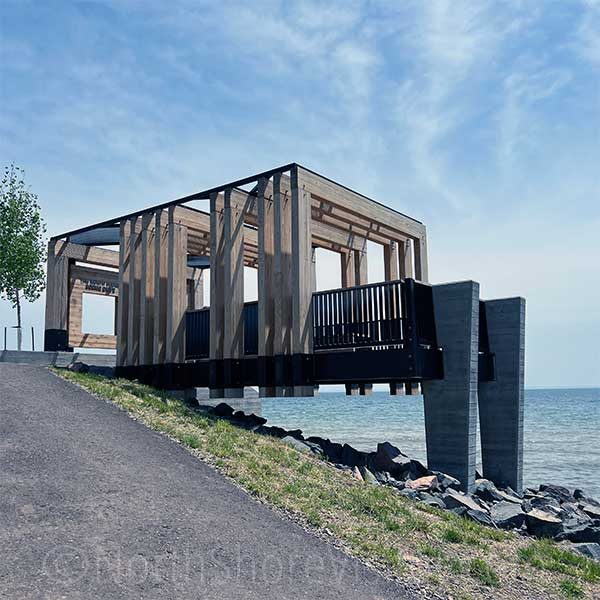
French River Wayside Rest Area
The interpretive panels at French River Wayside Rest give a snapshot of the creation of Scenic 61/Congdon Boulevard plus local commercial fishing history on Lake Superior. The site has an easy walk down to a gravel swimming beach making it an ideal place to cool down on those 12 hot days of the year.
A fish sanctuary from the mouth of the French River to the four-lane freeway is in place. The MN Department of Natural Resources traps adult rainbow trout, sometimes referred to as steelhead. The big steelhead run happens from late October into November, with a smaller spring run in April.
Eggs are removed and sent to a Minnesota hatchery, where offspring are raised and returned to Lake Superior. The hatchery fish have their adipose fin (the one on the back between the dorsal fin and tail) clipped. Unclipped fish are native and have naturally reproduced.
steelhead, rainbow, kamloops trout – what’s the difference?
Rainbow trout and steelhead are the same species. Steelhead live in saltwater and spawn in freshwater streams, while rainbows live in freshwater.
Pacific steelhead fish were introduced to Lake Superior in the 1890s. Rainbows raised in a hatchery and released are also known as Kamloops or ‘Loopers. Unclipped/native fish can never be harvested when fishing.
Stop at the old Blue Bird Landing beach on Lake Superior and cast for trout and coho [salmon]. Keep an eye out for freshwater whales, too.
You can also fish the 10.8 Talmadge and 15.7 Sucker Rivers. License required.
Stoney Point Scenic Drive is a brief one-mile dirt road edging Lake Superior off Scenic Highway 61. It is ideal for wave-watching on stormy days, lake gazing and relaxing on calm days, and picnicking. You will find public access to the big lake toward the east end of the road.
The little burg of Knife River MN includes a DNR marina, the river, a Lake Superior beach, rec center, and a few businesses. Originally founded as Buchanan, after President Buchanan, this unincorporated village has been home to commercial fishermen for the past 150+ years. During a spring gale in April 1914, 64-mile-per-hour winds proved too much for the 239-foot steel steamer Benjamin Noble, which sank off Knife Island.
Walk from Agate Bay near the iron ore docks along a 1-mile paved walkway, the Sonju Trail, to Burlington Bay.
Agate Bay attractions include the Edna G tugboat, the Railroad Depot museum, the Two Harbors Lighthouse museum and gift shop, and working ore docks – watch ships enter the harbor, dock and load up with pellets. Skip stones, picnic and search for agates along the cobblestone beach of Burlington Bay.
mile 27.5
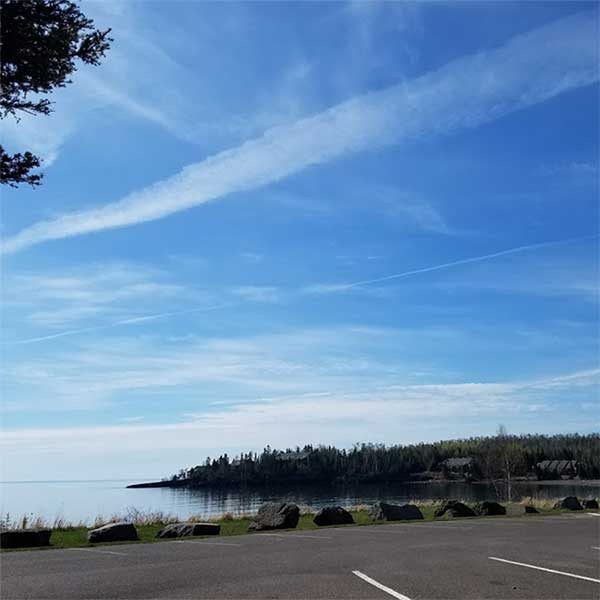
Walk the Beach
Flood Bay State Wayside offers a nice long pebble beach. Amble, search for agates, wade, picnic, relax. The walkway to the beach goes through a wetland that is sometimes home to waterfowl, otters, and beavers. Offers a seasonal restroom.
mile 28.6

Mouth of the Stewart River
This designated trout stream is popular with shore-casters and has a spring steelhead run. The small dirt parking area opens into paths down to the river mouth and a view over a small cliff into the lake. The narrow river winds its way into inland forests. Loggers tried using the stream to shoot logs to the big lake, but it was too narrow and would result in . . . logjams.
For many this is the first big stop on their travels. This four-season park offers accessible trails to rushing waterfalls, plus trails through the woods, along the river and to Lake Superior; naturalist programs, biking, fishing, fall colors, birding, skiing, plus shopping, exhibits, restrooms, and visitor info in a firelit lobby within the Visitor Center.
mile 42.6
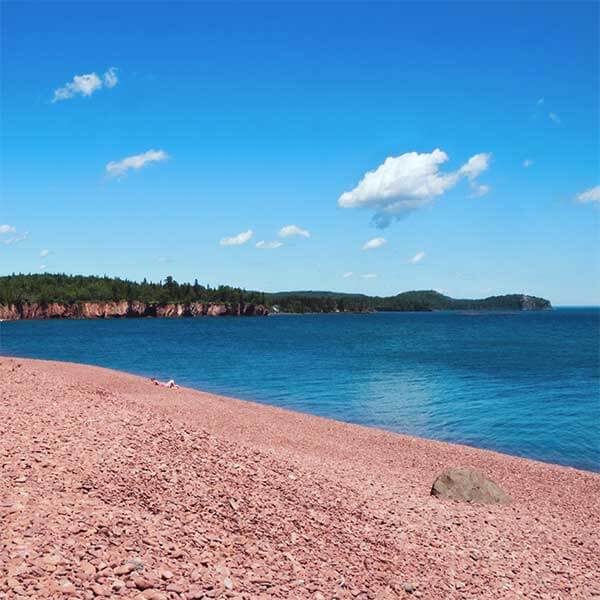
Go to the Pink Beach
Drive right up to this expansive beach, Iona’s Beach Scientific & Natural Area, which is bookended by cliffs, rhyolite, and bedrock to the north and basalt to the south. Nor’easters work away at the northern cliff, breaking off shards of the pink rhyolite and washing them down shore. Once home to Twin Points Resort, the area is named after longtime owner Iona Lind.
Scientific and Natural Areas [SNAs] are natural resources that are rare or of exceptional scientific and educational value.
Split Rock Lighthouse is the most well-known visual representation of the North Shore. Have you been? The Lighthouse, part of the MN Historical Society, offers a guided tour of the lighthouse, fog-signal building, oil house and lightkeeper’s house. The visitor center has gifts, exhibits and a brief video. Each November 10th, the beacon is lit at the Edmund Fitzgerald Memorial.
The adjacent state park has trails, camping, and alluring forests running down to the shoreline.
Spacious slips for daily or seasonal rental, a picnic area, amenities in the marina shop, a short hiking path and a top-notch view of ships being loaded with taconite at Cliffs Natural Resources dock. The Silver Bay Marina plays host to the annual Salmon Classic fishing contest, too.
This calm slice of shoreline gets its name from the taconite tailings [crushed rock] that make up the beach. Offering picnic tables, outhouses and both the Black Beach and an agate beach. New in 2020 is the adjacent campground.
Spread over 9300 acres, Tettegouche is a handful of overlapping parks including Lake Superior coastline, Baptism River and falls, inland lakes, hardwood forests, rugged topography PLUS 24/7 restrooms, a café and gifts, and charming fireside indoor and outdoor seating. Something for everyone!
Take a leg-stretcher along the 1-mile interpretive nature trail that departs from the parking area and includes a stop at Sugarloaf Cove on Lake Superior. The Interpretive Center has exhibits and artifacts from early logging operations in the area. See historic logging operation artifacts and take part in nature programs. The site is also a Scientific and Natural Area, home to unque geological and plant specimens.
The name sugarloaf comes from the craggy rocks jutting out of Lake Superior near the shore. Settlers purchased white sugar in cones aka sugarloaves, and the rocks in the cove reminded them of a partially used sugarloaf.
For thirty-one years Taconite Harbor was home to families working the adjacent Erie Mining loading dock and power plant. When mining took a downturn in the 1980s, the company cleared the town for a new venture. Follow the road south of Highway 61. On the right you will see the remnants of main street, including a few street lights and the basketball court. The end of the road takes you to an outdoor exhibit explaining the taconite operation, a public boat launch, safe harbor, and views of the rusting ore docks.
mile 79.2
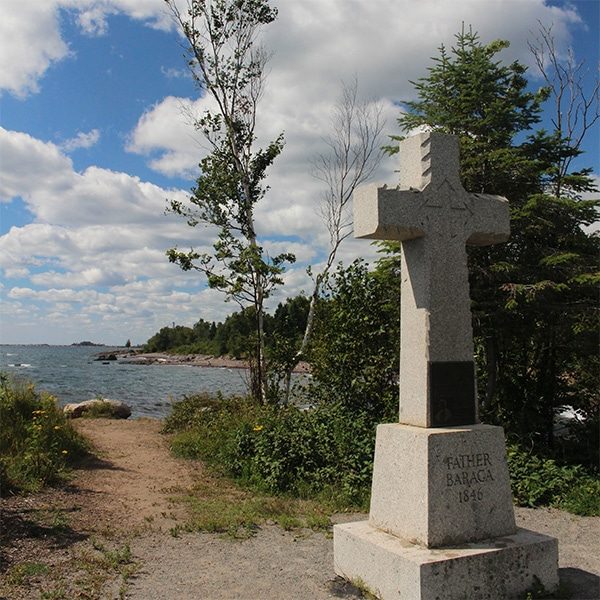
Father Baraga’s Cross
Take a moment to be grateful for safe travels. In 1846, Father Frederic Baraga set sail from La Pointe Michigan to an outpost on the North Shore. The wind picked up and waves battered the small boat. After a harrowing on the big lake, the missionary and his companions safely beached the boat at the mouth of the Cross River. In gratitude for their safe arrival, the priest erected a wooden cross on the beach. The current symbolic cross has been placed in remembrance of his journey. It is a quiet stone beach.
Amazing river gorges that start a few feet inland from the highway, waterfalls, two foot-bridges, hiking, a cobblestone river mouth, camping and hiking. Hike a short way upriver to the amazing gorges, then return south of the highway and walk across the foot-bridge. During spring runoff or after rainy days, the river spray will mist you. Back in the day, this was the only river without a [sand] bar at the mouth, hence the name, Temperance.
mile 82.4

See the Handmade Cobblestone Well and Bridges
Tofte Park
Located on a quiet piece of Lake Superior shoreline, Tofte Park is a lovely spot for a picnic, a party (you can rent the space!), or hanging out watching the waves. Tucked behind the Tofte Post Office and Firehall, the park is noted for its two cobblestone bridges and a cobblestone wishing well that once was offered spring fed water. Take a closer look: the bridge has red, white and blue-grey cobblestones, brought in by fishing boat from nearby Schroeder in the early 1900s.
The park has a short paved path, an open log pavilion, picnic area, small playground and access to Lake Superior. Park land was donated by Elizabeth Tofte, the eldest daughter of original European settlers John and Cecilia Tofte. As she was still a minor, her father had to act as her legal representative. Her mother donated land for the nearby Zoar Lutheran church. And now we all get to enjoy it!
Nearby
Bluefin Bay Resort | Temperance River State Park | Britton Peak | Town of Tofte
Grandview Park in Lutsen offers a pavilion with picnic tables, charcoal grills, a fire ring, a playground and room to run around. Family-friendly and open to all.
Cascade brings the river to you. A quick jaunt up well-maintained trails brings you to overlooks and a footbridge spanning the cascades. This is an ideal photo spot.
Picnic spots are a quarter mile farther along Highway 61. If you want to ski over the river and through the woods, Cascade has amazing cross-country skiing. Feel free to snowshoe anywhere, too.
Heading northeast, just past Thomsonite Beach, Highway 61 curves left, revealing picturesque Good Harbor Bay, Seagull Rock, and, in the distance, Grand Marais. Use the pull off to admire the view and take photos. A quarter mile farther is Cut Face Creek Wayside, a nice spot for a picnic, an agate search, and skipping stones.
Artist’s Point is the island and tombolo, a spit of land, that makes up the east side of the harbor, including the east breakwall and lighthouse; a drop of wilderness in the lake. So inspiring! Find picnic tables along the East Bay’s cobblestone beaches.
Ah, the Grand Marais Harbor, the perfect place to skip stones, gaze, look for an agate, bliss out, watch for a flock of seagulls and see if it is following a local commercial fisherman into the docks.
Coming soon
Work on the new breakwall on the west side of the harbor is schedule for completion around Labor Day . The breakwall will provide safe entry/return for boats AND will have a paved path providing new perspectives of Lake Superior, the Grand Marais Harbor, the town and the Sawtooth Mountains.
No, but keep looking! Enjoy the wide-open vistas at Five Mile Rock, a landmark for early travelers. Listen to the waves lap, pick rocks, and see if anyone is fishing around the rock.(That’s five miles from Grand Marais, not five miles out in the lake).
Relax, skip stones, and picnic on the beach. The there-and-back hike follows the Kadunce River with spurs to overlooks and pools. During the warm months of summer, when the water runs low, many locals hike up the river, including climbing the waterfall.
mile 122.8
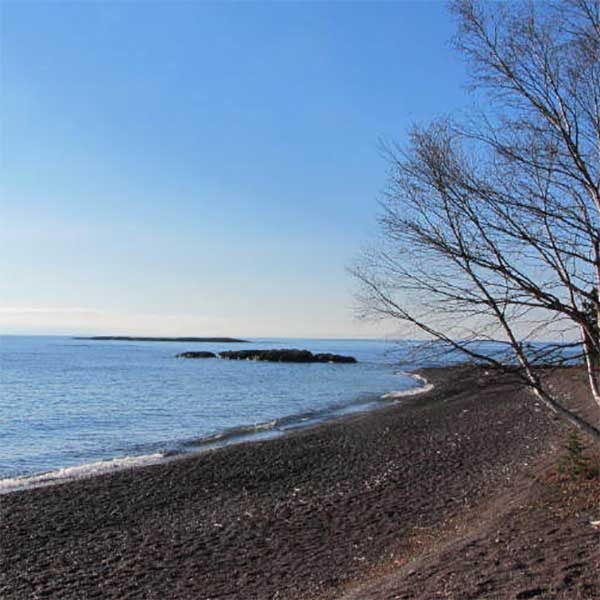
Paradise Beach
A nice stretch of cobblestone beach close to Highway 61 and just farther enough from Grand Marais to be less visited. Admire the view, search for agates, have a picnic; mo amenities so pack out what you take in.
mile 130.0
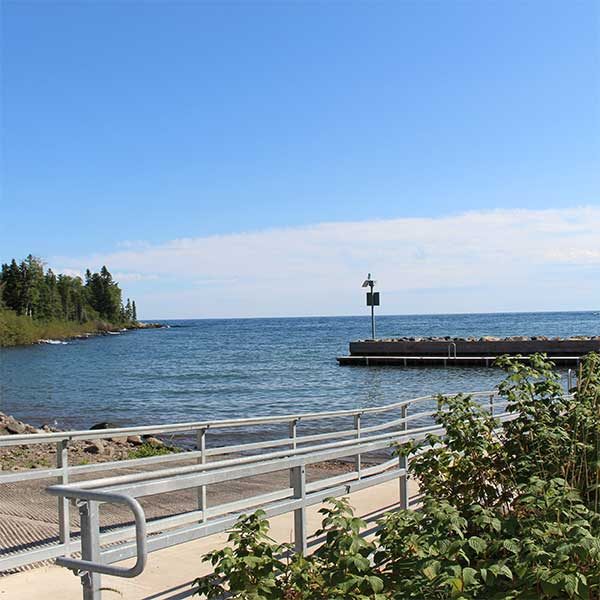
Horseshoe Bay
This sweet little bay is a Lake Superior safe harbor with boat access; no amenities; pack out what you pack in.
Learn about the alliance between the Grand Portage Ojibwe and the North West Company during the fur trade boom in the late 1700s. at the Grand Portage National Monument. Explore the reconstructed stockade and great hall, the visitor center, garden and grounds, Mount Rose trail, and historic Grand Portage trail leading 8.5 miles inland to Fort Charlotte on the Pigeon River.


